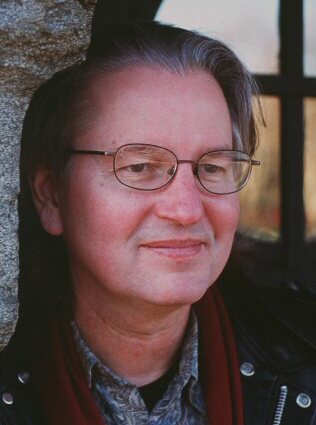
Michael Bruce Sterling is an American science fiction author known for his novels and short fiction and editorship of the Mirrorshades anthology. In particular, he is linked to the cyberpunk subgenre.
The Viridian Design Movement was an aesthetic movement focused on concepts from bright green environmentalism. The name was chosen to refer to a shade of green that does not quite look natural, indicating that the movement was about innovative design and technology, in contrast with the "leaf green" of traditional environmentalism. The movement tied together environmental design, techno-progressivism, and global citizenship. It was founded in 1998 by Bruce Sterling, a postcyberpunk science fiction author. Sterling always remained the central figure in the movement, with Alex Steffen perhaps the next best-known. Steffen, Jamais Cascio, and Jon Lebkowsky, along with some other frequent contributors to Sterling's Viridian notes, formed the Worldchanging blog. Sterling wrote the introduction to Worldchanging's book, which is considered the definitive volume on bright green thinking. Sterling formally closed the Viridian movement in 2008, saying there was no need to continue its work now that bright green environmentalism had emerged.

The Whole Earth Catalog (WEC) was an American counterculture magazine and product catalog published by Stewart Brand several times a year between 1968 and 1972, and occasionally thereafter, until 1998. The magazine featured essays and articles, but was primarily focused on product reviews. The editorial focus was on self-sufficiency, ecology, alternative education, "do it yourself" (DIY), and holism, and featured the slogan "access to tools". While WEC listed and reviewed a wide range of products, it did not sell any of the products directly. Instead, the vendor's contact information was listed alongside the item and its review. This is why, while not a regularly published periodical, numerous editions and updates were required to keep price and availability information up to date.

Techno-progressivism or tech-progressivism is a stance of active support for the convergence of technological change and social change. Techno-progressives argue that technological developments can be profoundly empowering and emancipatory when they are regulated by legitimate democratic and accountable authorities to ensure that their costs, risks and benefits are all fairly shared by the actual stakeholders to those developments. One of the first mentions of techno-progressivism appeared within extropian jargon in 1999 as the removal of "all political, cultural, biological, and psychological limits to self-actualization and self-realization".
Green computing, green IT, or ICT sustainability, is the study and practice of environmentally sustainable computing or IT.

Grist is an American non-profit online magazine founded in 1999 that publishes environmental news and commentary. Grist's tagline is "Climate. Justice. Solutions." Grist is headquartered in Seattle, Washington, and has about 50 writers and employees. Its CEO is former state representative Brady Walkinshaw.
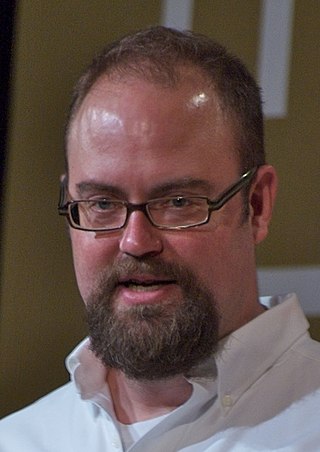
Alex Steffen is an American futurist and advocate of 'bright green environmentalism' who writes and speaks about sustainability and the future of the planet. He emphasizes the importance of imagining persuasive, positive possible futures: "It's literally true that we can't build what we can't imagine,... The fact that we haven't compellingly imagined a thriving, dynamic, sustainable world is a major reason we don't already live in one."
A sustainable business, or a green business, is an enterprise that has a minimal negative impact or potentially a positive effect on the global or local environment, community, society, or economy—a business that strives to meet the triple bottom line. They cluster under different groupings and the whole is sometimes referred to as "green capitalism." Often, sustainable businesses have progressive environmental and human rights policies. In general, a business is described as green if it matches the following four criteria:
- It incorporates principles of sustainability into each of its business decisions.
- It supplies environmentally friendly products or services that replace demand for nongreen products and/or services.
- It is greener than traditional competition.
- It has made an enduring commitment to environmental principles in its business operations.
Jon Lebkowsky is an American web consultant/developer, author, and activist who was the co-founder of FringeWare Review. FringeWare, an early attempt at ecommerce and online community, published a popular "magalog" called FringeWare Review, and a literary zine edited by Lebkowsky called Unshaved Truths. FringeWare's email list, called the FringeWare News Network, established an international following for the organization, which also opened a store in Austin, Texas.
Bright green environmentalism is an ideology based on the belief that the convergence of technological change and social innovation provides the most successful path to sustainable development.

Greenhouse Solutions with Sustainable Energy is a 2007 book by Australian academic Mark Diesendorf. The book puts forward a set of policies and strategies for implementing the most promising clean energy technologies by all spheres of government, business and community organisations. Greenhouse Solutions with Sustainable Energy suggests that a mix of efficient energy use, renewable energy sources and natural gas offers a clean and feasible energy future for Australia.
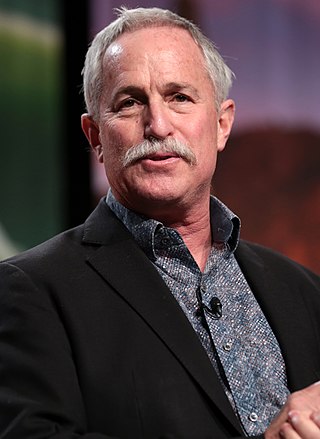
Joel Makower is an American entrepreneur, writer and strategist on sustainable business, clean technology, and green marketing. His work has focused on three principal topics: how companies of all sizes and sectors are integrating environmental thinking into their operations in a way that produces business value; the creation of new companies and markets for clean energy, clean water, and advanced materials; and the strategies and tactics that companies use in order to communicate and market their environmental efforts and leadership, especially to consumers.

John Elkington is an author, advisor and serial entrepreneur. He is an authority on corporate responsibility and sustainable development. He has written and co-authored 20 books, including the Green Consumer Guide, Cannibals with Forks: The Triple Bottom Line of 21st Century Business, The Power of Unreasonable People: How Social Entrepreneurs Create Markets That Change the World, and The Breakthrough Challenge: 10 Ways to Connect Tomorrow's Profits with Tomorrow's Bottom Line.
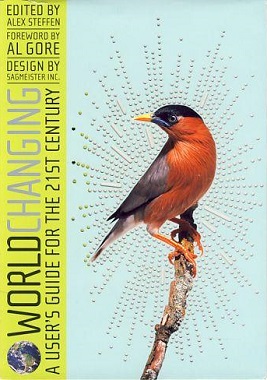
Worldchanging: A User's Guide for the 21st Century is a book about environmental concerns and practical actual responses. It is a compendium of the solutions, ideas and inventions emerging today for building a sustainable, livable, prosperous future. In November 2006, Worldchanging published a survey of global innovation, with a foreword by Al Gore, design by Stefan Sagmeister and an introduction by Bruce Sterling. It has received praise, was a winner of the 2007 "Green Prize" for sustainability literature, and is being translated into French under the title Change Le Monde, German and several other languages. Harry N. Abrams, Inc., the publisher of the hardcover edition, listed it among their 50 best selling titles in July 2008.

The Buckminster Fuller Challenge is an annual international design competition that awards $100,000 to the most comprehensive solution to a pressing global problem. The Challenge was launched in 2007 and is a program of The Buckminster Fuller Institute. The competition, open to designers, artists, architects, students, environmentalists, and organizations world-wide, has been dubbed "Socially-Responsible Design's Highest Award" by Metropolis Magazine.
Environmentally sustainable design is the philosophy of designing physical objects, the built environment, and services to comply with the principles of ecological sustainability and also aimed at improving the health and comfort of occupants in a building. Sustainable design seeks to reduce negative impacts on the environment, the health and well-being of building occupants, thereby improving building performance. The basic objectives of sustainability are to reduce the consumption of non-renewable resources, minimize waste, and create healthy, productive environments.

Jamais Cascio is a San Francisco Bay Area–based author and futurist.
Realised between 2002 and 2004, the project Sonic City was pioneer projects in locative media, in particular the mobile music field which it contributed in establishing.
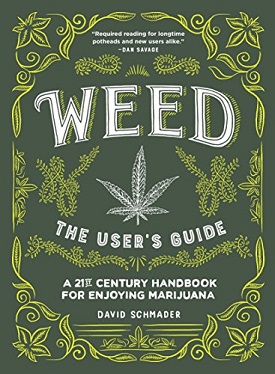
Weed: The User's Guide: A 21st Century Handbook for Enjoying Marijuana is a 2016 book about cannabis by Seattle writer David Schmader. Schmader is also a writer for The Stranger, a Seattle alt weekly newspaper, where he writes a cannabis column as of August 2016. The book is in part a cannabis cookbook, containing an edibles recipe section.











